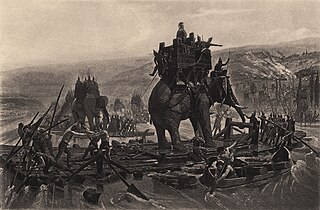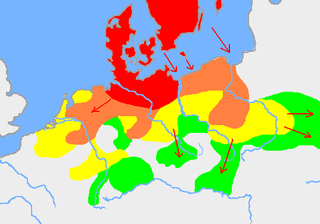
The 3rd century BC started the first day of 300 BC and ended the last day of 201 BC. It is considered part of the Classical Era, epoch, or historical period.
This article concerns the period 229 BC – 220 BC.
Year 241 BC was a year of the pre-Julian Roman calendar. At the time it was known as the Year of the Consulship of Atticus and Cerco. The denomination 241 BC for this year has been used since the early medieval period, when the Anno Domini calendar era became the prevalent method in Europe for naming years.
This article concerns the period 319 BC – 310 BC.

This article concerns the period 309 BC – 300 BC.
This article concerns the period 279 BC – 270 BC.
This article concerns the period 269 BC – 260 BC.
This article concerns the period 259 BC – 250 BC.
This article concerns the period 249 BC – 240 BC.
This article concerns the period 239 BC – 230 BC.

Year 250 BC was a year of the pre-Julian Roman calendar. At the time it was known as the Year of the Consulship of Regulus and Longus. The denomination 250 BC for this year has been used since the early medieval period, when the Anno Domini calendar era became the prevalent method in Europe for naming years.
Year 246 BC was a year of the pre-Julian Roman calendar. At the time it was known as the Year of the Consulship of Crassus and Licinus. The denomination 246 BC for this year has been used since the early medieval period, when the Anno Domini calendar era became the prevalent method in Europe for naming years.
Year 226 BC was a year of the pre-Julian Roman calendar. At the time it was known as the Year of the Consulship of Messalla and Fullo. The denomination 226 BC for this year has been used since the early medieval period, when the Anno Domini calendar era became the prevalent method in Europe for naming years.
Year 228 BC was a year of the pre-Julian Roman calendar. At the time it was known as the Year of the Consulship of Ruga and Verrucosus. The denomination 228 BC for this year has been used since the early medieval period, when the Anno Domini calendar era became the prevalent method in Europe for naming years.
Year 237 BC was a year of the pre-Julian Roman calendar. At the time it was known as the Year of the Consulship of Caudinus and Flaccus. The denomination 237 BC for this year has been used since the early medieval period, when the Anno Domini calendar era became the prevalent method in Europe for naming years.
Year 238 BC was a year of the pre-Julian Roman calendar. At the time it was known as the Year of the Consulship of Gracchus and Falto. The denomination 238 BC for this year has been used since the early medieval period, when the Anno Domini calendar era became the prevalent method in Europe for naming years.
Year 240 BC was a year of the pre-Julian Roman calendar. At the time it was known as the Year of the Consulship of Centho and Tuditanus. The denomination 240 BC for this year has been used since the early medieval period, when the Anno Domini calendar era became the prevalent method in Europe for naming years.
Year 247 BC was a year of the pre-Julian Roman calendar. At the time it was known as the Year of the Consulship of Metellus and Buteo. The denomination 247 BC for this year has been used since the early medieval period, when the Anno Domini calendar era became the prevalent method in Europe for naming years.
Year 258 BC was a year of the pre-Julian Roman calendar. At the time it was known as the Year of the Consulship of Calatinus and Peterculus. The denomination 258 BC for this year has been used since the early medieval period, when the Anno Domini calendar era became the prevalent method in Europe for naming years.
Year 307 BC was a year of the pre-Julian Roman calendar. At the time, it was known as the Year of the Consulship of Caecus and Violens. The denomination 307 BC for this year has been used since the early medieval period, when the Anno Domini calendar era became the prevalent method in Europe for naming years.


